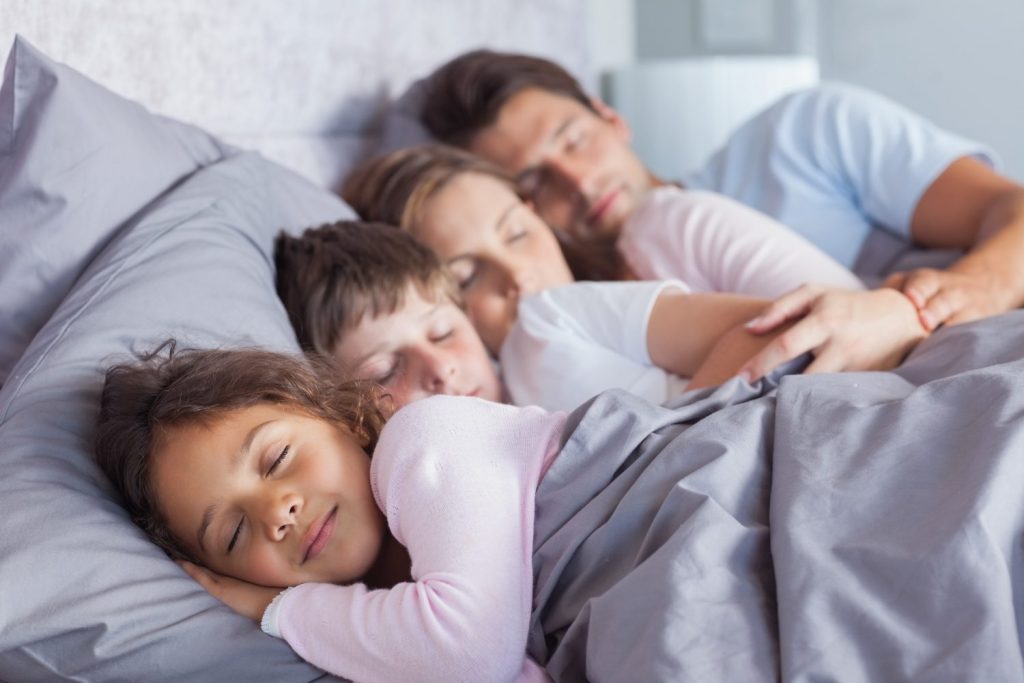Sydney: Co-sleeping with older children is a practice many parents embrace, though concerns often arise about whether it is the best choice for their child’s development. In today’s fast-paced world, societal expectations, and conventional parenting norms place pressure on families to follow traditional sleep arrangements, leading to mixed emotions around co-sleeping, as highlighted by research from ABC News (Photo credits: ABC News).
Why Do Parents Choose Co-Sleeping?
Parents co-sleep for a multitude of reasons, from fostering security to enhancing bonding and convenience. Take Sophia, a mother of a nearly four-year-old son, who views co-sleeping as integral to her child’s sense of safety, day and night. “We’ve always followed his lead,” she shares, explaining how she and her partner prioritize their child’s emotional and physical well-being by ensuring he feels secure 24/7.
Many parents, like Sophia, find that co-sleeping creates a peaceful bedtime routine free from the usual separation stress or nightly battles. The calm, harmonious environment helps children drift into sleep more easily, while parents gain comfort in having their little ones close.
Common Misconceptions and Concerns
Despite its benefits, co-sleeping isn’t without critics. Friends, family members, and even paediatricians may voice concerns about its impact on a child’s independence. Some argue it may foster dependency or hinder the development of healthy sleep habits, but experts maintain these fears are largely unfounded.
Dr. Chris Seton, a paediatric and adolescent sleep specialist at Sydney's Woolcock Institute of Medical Research, highlights that co-sleeping is far more common than people think, especially among children around nine years old. “There’s no evidence that co-sleeping negatively affects a child’s psychological development,” he states, debunking the myth of long-term dependency.
Moira Junge, CEO of the Sleep Health Foundation, echoes this sentiment. She emphasizes that there’s no universal sleep solution, and what works for one family may not work for another. The priority, she notes, should be ensuring everyone gets adequate rest—regardless of the specific arrangement.
The Historical Context of Co-Sleeping
Co-sleeping has deep historical roots and remains the norm in many cultures. For centuries, families shared beds to conserve resources, stay warm, and maintain security. The shift to separate sleeping spaces began in wealthier Western societies around the 15th century, where individual bedrooms became a symbol of prosperity. In fact, humans—like many mammals—are biologically inclined to sleep near their young for safety and bonding.
Sophia and her partner are aware of the historical and biological context underlying their decision. “It feels natural to us,” she says, adding that their son has never experienced the anxiety of nighttime separation.
When Co-Sleeping Doesn’t Work
While co-sleeping suits many families, it’s not without challenges. Parents of restless sleepers, for instance, may experience disrupted sleep. In such cases, experts suggest transitioning children to separate beds.
Dr. Seton recommends reward therapy for children around five or six, offering incentives like extra screen time or small gifts to encourage sleeping in their own bed. Another gradual approach is the “win-lose contract,” where children sleep on a thin mattress on the parents’ bedroom floor. This allows proximity while maintaining some independence, easing the transition.

Breaking the Stigma of Co-Sleeping
Despite co-sleeping’s prevalence, it remains a divisive issue. Many parents feel judged or fear they’re making the “wrong” choice. Dr. Seton reassures parents that globally, more children sleep with caregivers than alone. “There’s no evidence that co-sleeping hinders a child’s resilience or independence,” he asserts.
Though only 9% of Australian children co-sleep with their parents, globally, nearly 60% of preschoolers sleep alongside their caregivers. This highlight co-sleeping as more a cultural choice than a psychological concern.
Finding the Right Balance
The success of co-sleeping lies in communication and family flexibility. Sophia and her family constantly reevaluate their decision. “We check in with him every so often to see when he’s ready to sleep in his own bed,” she says, noting their openness to change as their son grows.
Whether parents choose co-sleeping or not, the key is ensuring everyone gets the rest they need. If co-sleeping leads to stress or disruption, transitioning to separate spaces may be the right choice. However, if the arrangement works for everyone, there’s no rush to make a change.
Conclusion: A Personal Choice
Co-sleeping with older children is a deeply personal decision. What matters most is that families feel supported in their choices, whether they share a bed or not. With open communication and a willingness to adapt, co-sleeping can be a positive and beneficial experience for both children and parents.
In the end, the most important factor is ensuring every family member gets the rest they need, and that the arrangement fosters the family’s overall well-being. If co-sleeping works for your household, rest assured—it’s a valid, often beneficial choice.